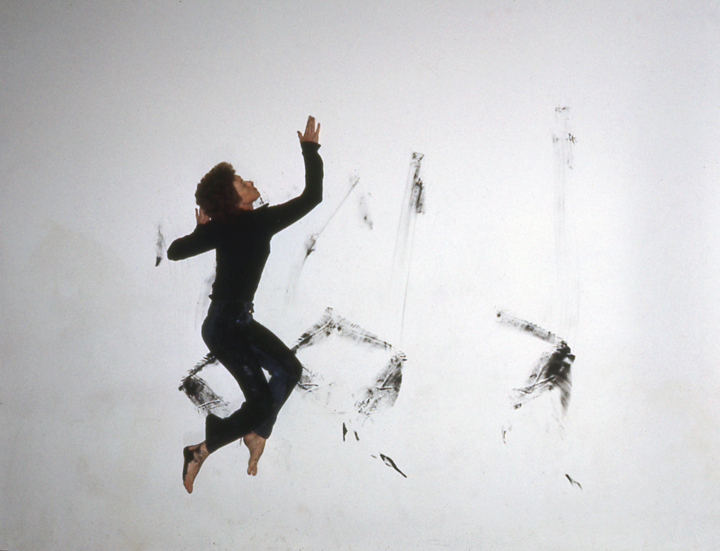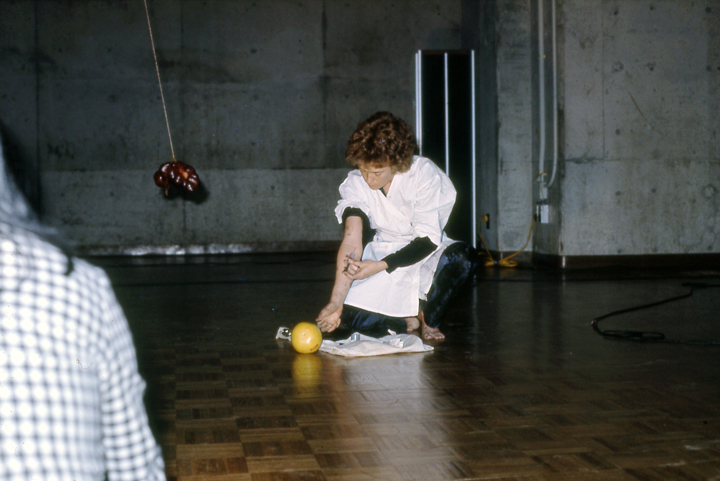Construction of a Novel Frankenstein (1975)
Building on the story of Frankenstein and using the metaphor of a monster birth, this performance deconstructs both Mary Shelley’s novel and the author’s life. Her mother, one of the earliest feminists theorists, died giving birth to Mary Shelley, who ran away with the poet Shelley, a married man, at 16. Her first novel written in exile was Frankenstein, a tale that reveals an author’s overreaching and ultimately fatal desire to create (in this case a human life), which turns out in the end to be monstrous. Exploring the relationship between identity and the physical body, using imagery from medical literature on the new science of organ transplantation, a series of performed and projected images operate as a novel: text from the introduction of Shelly’s book, a silent black and white film where two women sew their clothes together and rip them apart, news articles and cartoons on transplantation and organs, a professorial deconstruction of the novel Frankenstein by an actor, Lacy in a lab coat drawing blood from her arm—all woven together to create an intricate story of the frailty of the body, the replaceable nature of essential parts, the relationship between identity and flesh, and the desire to create.
This performance was enacted twice: at the Woman’s Building in Los Angeles and, in this photo, at Western Washington State University, Bellingham, Washington.

